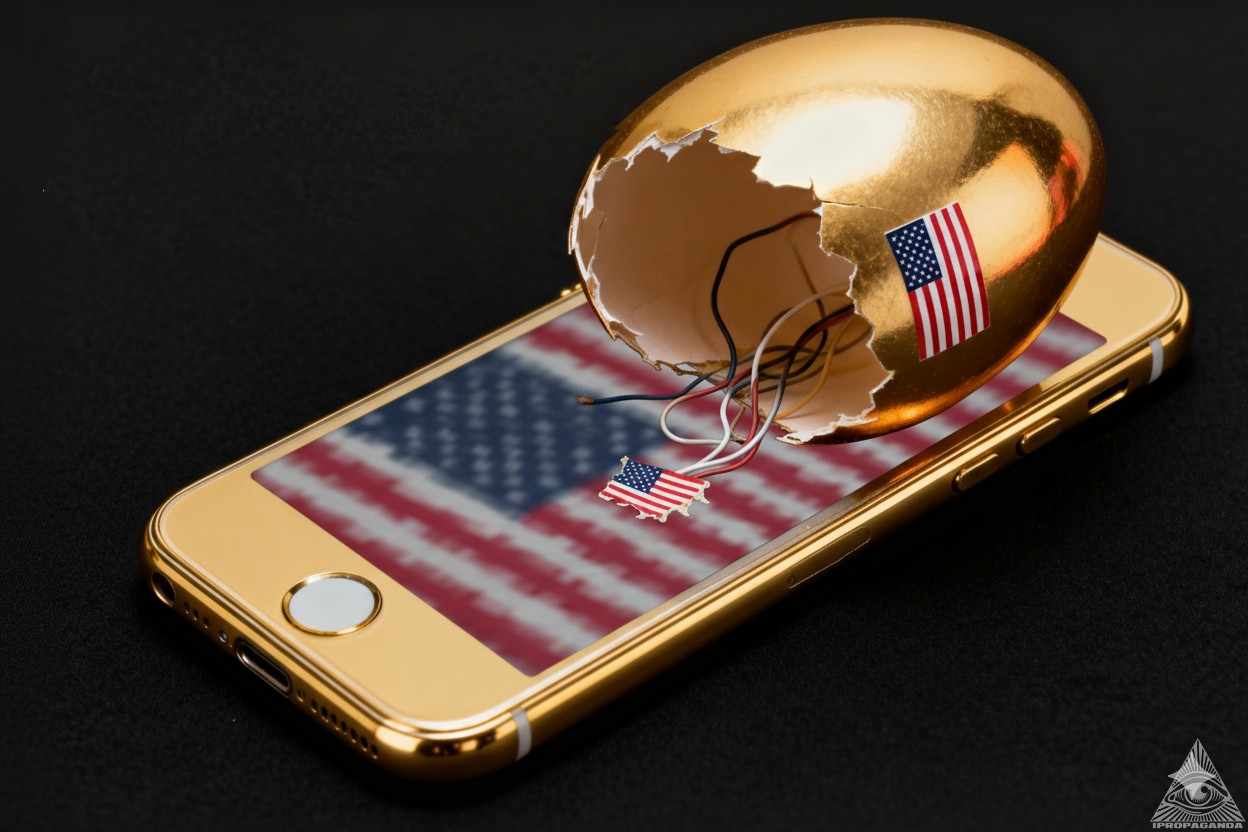
The announcement of Trump Mobile and its flagship “T1 Phone” invites not only skepticism, but a deeper reflection on how modern politics, marketing and trust intersect. What we’re witnessing isn’t just a dodgy tech launch — it’s a symbol of deeper structural rot in how American public life deals with information, commerce and power.
The surface grift
From the outset the T1 Phone was wrapped in spectacle: a gold-plated smartphone, branded “American,” priced at $499, paired with a monthly plan referencing the numbers “45” and “47” (in clear alignment with Donald J. Trump’s presidency). The press release touted a device “proudly designed and built in the United States.”
But already the cracks were visible:
Analysts noted the implausibility of a genuinely US-manufactured smartphone at that price point and timeframe.
The marketing quietly changed: phrases like “Made in the USA” were scrubbed, replaced by vague language like “designed with American values in mind.”
No one outside the company has apparently received the phone. One journalist who pre-ordered $100 deposit says she’s seen nothing.
Website images appear to use a third-party phone case (with another brand’s logo still visible) or even an iPhone back figment.
In sum: a veneer of patriotic branding for a product with murky provenance, fuzzy deliverables and seemingly no accountability schedule.
What the grift tells us
This isn’t just about one phone. It signals a broader disease:
1. The commodification of identity over substance.
The phone isn’t being sold because it’s the best device—it’s being sold because it signals allegiance. The promise is less “cutting-edge handset” than “I’m part of the tribe.” Which means the “product” is really a symbol. When you sell symbols, you don’t necessarily need to deliver the substance.
2. Trust erosion in the marketplace and in public life.
Consumers expect basic things: that if you pay, you’ll get what you paid for; that specs align with what’s promised; that manufacturing claims are real. When a phone brand says “Made in USA” and then quietly removes that claim, trust is chipped away. Trust in commerce becomes entangled with political trust — e.g., “If they can’t tell the truth about a phone, can they tell the truth about anything?”
The fact that tech media feel the need to keep chasing the question “where is the phone?” underlines how far gone the standard of transparency has fallen.
3. The weaponization of “us versus them” capitalism.
Branding this device as “American-made,” “for patriots,” at a price that references #45/#47 — this is not neutral marketing. It’s using political identity as a selling point. The consumer isn’t just buying a phone; they’re buying into a tribal identity, and that makes them less likely to question the underlying economics.
4. Regulatory and structural failure.
There are real questions: Is the phone really made in the U.S.? Are the specs real? Will it ship? The fact that the company removed “Made in USA” suggests they anticipated trouble with regulations (such as the FTC’s “all or virtually all” standard). Business Insider This signals an ecosystem where companies can exploit vague claims, delay product fulfilment, and rely on brand loyalty — and watch few consequences follow.
5. Normalizing the culture of “pre-order first, deliver maybe” in tech, but worse.
In tech, pre-orders and hype are the norm — but there’s usually legitimate forward progress, prototypes, firm schedules. Here, the hype exists without visible evidence of progress. It normalizes a “pay upfront and trust us” culture in which established standards vanish.
Broader implications for American society
Democracy and commerce intertwine.
When political branding enters commerce at this breadth, the lines blur between consumer choice and political affiliation. Rather than evaluating a product on its technical merits, customers evaluate it as a statement — “I support him, so I buy this.” That undermines the marketplace as a domain of rational decision-making and elevates it into a domain of symbolism and identity.
Vulnerability of underserved populations.
Many of the people most susceptible to this kind of symbolic appeal are those already underserved: economically restrained, disenfranchised, eager for pride and recognition. A “Made in USA” phone marketed as patriotic may appeal strongly — but if the substance is weak, it becomes exploitative.
Precedent for higher-stakes grifts.
If a smartphone brand can get away with vague manufacturing claims, delayed deliverables, minimal transparency — what stops similar practices in more consequential sectors (energy, infrastructure, health)? The erosion of accountability in one domain sets a precedent for others.
Weakening of standards.
Manufacturing claims, consumer protections, advertising truth-in-labelling — these all assume an ecosystem where companies fear blowback and regulators intervene. If that ecosystem becomes toothless, the “race to the bottom” accelerates.
Brand over governance.
What we’re looking at is a model: create a brand tied to a political movement, monetize that brand beyond the domain of democracy (into phones, services, subscriptions), and in doing so sidestep the usual checks of competition, regulation, evidence. It’s a hybrid of media, commerce and politics that resists clear accountability.
In conclusion
The T1 Phone is less a gadget and more a mirror: a reflection of a society where marketing supplants manufacturing, identity replaces product, and symbolism eclipses substance. Whether the phone ever ships or not, its significance lies in what it reveals: a brand-driven marketplace, the vulnerability of identity‐based commerce, and an erosion of routine trust.
This matters because if we shrug it off as “just another gadget,” we miss how the same mechanics will amplify far more consequential operations. The calculus isn’t just “did I get the phone” — it’s “are we trading our standards, our marketplace fairness, our institutional integrity, for branding and spectacle?”
If you like, I can map out the specific legal and regulatory gaps that allow this sort of thing to proceed — we could analyze where regulators failed or have weak teeth. Would you like that?
